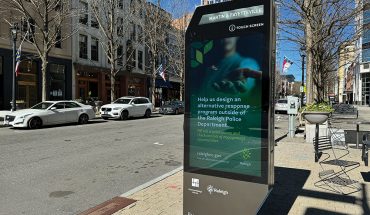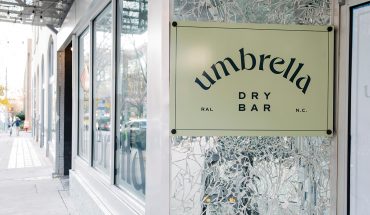Dix Park takes shape
This is your park. What do you want to do with it?
by Liza Roberts
If you ever have the chance to tour the land that could become America’s next great public park with senior City of Raleigh planner Kate Pearce, count yourself lucky, but don’t expect a leisurely stroll. These 307.9 acres – the grounds of the former Dorothea Dix Hospital – are just too big, and she’s got too much to tell you about what they were, are, and will become. A tour of Dix with Pearce is a workout, a history lesson, a colloquy on community; it’s a treasure hunt, an adventure, and a peek into the future.
“This,” she says, gesturing broadly to a wide field in a western corner, “is one of the great spots. This is where you can have your Sound of Music moment. You’re less than a mile from downtown Raleigh, but you feel miles away.”
Raleighites first became the rightful owners of the property in 2015 when the city bought the sprawling site from the state for $52 million. Some citizens have already made the parklike grounds their own: playing flag football, riding bikes, walking dogs, doing tai chi. But a real central park doesn’t happen ad-hoc. It’s purposeful. It takes its mission seriously, it’s easily accessible and community-focused; it offers amenities like performance venues, dining options, public art, and playgrounds; it’s busy with programs for people of all kinds.
Pearce heads up the city’s effort to create that kind of awesome park out of this lavish land. It’s “one of those once-in-a-lifetime opportunities to do something amazing and have an impact.”
The impact will be felt by the city and state as a whole, and her tour comes at an important time – the moment when the community at large gets to have its own impact, weighing in on what it wants its park to be.
People already steeped in the work have a hard time containing their enthusiasm. “There’s a drive to create something that’s truly amazing, to create a world-class public space,” says Sean Malone, president and CEO of Dorothea Dix Park Conservancy, the nonprofit group working with the city to make it happen. “I feel pretty confident that what is created here will get huge national attention.”
Now, after hiring world-renowned landscape architecture firm Michael Van Valkenburgh Associates and spending months looking in at the land and assessing what’s there, planners are starting to look out at the community and ask questions. “How can this be a park for everyone, that’s built by everyone?” Malone asks.
Adrienne Heflich, project manager for Dix Park at MVVA, says her mandate is to listen well, and to honor the land and the people who will use it. “There is enormous potential for the park to be really relevant to daily lives,” Heflich says. “We’re thinking really long-term, 10, 30, 100 years from now: what the property will be in the context of Raleigh, the region, and the state.” She’s researching the writings of Dorothea Dix, who was an activist on behalf of the mentally ill, and the writings of famed landscape designer Frederick Law Olmsted, who was a contemporary of Dix’s. Both believed in the healing power of nature and the importance of public investment in bringing the outdoors to urban environments for spiritual and mental health.
MVVA, rooted in a belief that “a strong sense of place helps enhance everyday experience, healthy communities, and quality of life, which are the heart of a livable city,” has designed award-winning public parks including New York’s Brooklyn Bridge Park and Hudson River Park; plazas like the ones at the Boston Children’s Museum and New York’s Jacob Javits Plaza; and university campus landscapes at schools including Harvard, Princeton, and Amherst.
They’re taking that broad expertise on the road all over Raleigh and the state, inviting interested people to brainstorm. Armed with a 12-foot-by-12-foot scale model of the park property to show people just how expansive it is, planners are hearing all kinds of suggestions.
For “the kinds of people who don’t go to community meetings,” there’s also an online effort to gather ideas, says Malone, who left his job as president and CEO of the Frank Lloyd Wright Foundation in Milwaukee and moved to Raleigh to lead the Conservancy. Once people grasp the possibilities, he says, ideas pour out.
“It’s an unparalleled opportunity, and that’s not hyperbole,” he says. “You just don’t find this kind of acreage in a city anywhere … you don’t see places like this, and you don’t see communities able to take advantage of them.”
Legacy, future
“There’s the old steam plant – the Norfolk Southern freight line – the great field – the cemetery.” Pearce’s tour takes half a day, and it’s a trip into the past as much as a look toward the future. “The old dairy barn for the hospital is back here – here are the old chicken coops – this was one of the old worker cottages – that’s a pecan grove – there’s the old kitchen facility.”
All of it represents the legacy of the self-contained, self-sufficient universe that was Dorothea Dix Hospital. The residential psychiatric facility grew its own food, generated its own power, and kept to itself from the mid 1800s until about 1970. The last patients left in 2012. Today, many of its old buildings are filled with state Department of Health and Human Services workers, who will stick around for the seven-and-a-half more years on the department’s lease.
“We’ve got a list of interesting challenges and opportunities on this property,” Pearce says. “It’s still a working campus. How do we create a park but respect their work?”
That’s one question they’re studying. Some others: What to do with the hospital’s 85 buildings now, and once HHS leaves? What about the roads built to serve those buildings? What about transportation and circulation in general? How will people access the park? Also, more thematically: How will the park honor its complicated history as a psychiatric hospital? How about its 1700 – 1850s incarnation as a plantation owned by pioneering Wake County settler Colonel Theophilus Hunter, or its stint as an encampment for Sherman’s troops? How will it celebrate and preserve its ecology? How will it encourage mental and physical wellness? How will it embody and build on Raleigh’s creative identity? How will it reflect, educate, and celebrate the city and state’s present-day, multicultural community?
“We’re in the treasure hunt phase,” Pearce says. Some of the treasures she’s finding are actual historical artifacts – at least 6,000 of them – discovered in and around the hospital buildings and grounds. Hundreds of old maps, photographs, portraits, and hospital china have been unearthed; so has equipment like wheelchairs and an electroshock machine; relics, too, from the 16,000 Union troops who camped on Dix Hill in April 1865 as part of Sherman’s March to the Sea. Together, these objects will form the basis of a fall 2018 exhibit at the City of Raleigh Museum, and could also form the collection for a park museum, if one comes to pass. “It’s one of the hats I never thought I’d wear: The Historian,” Pearce says.
The other treasures Pearce, Malone, and the designers seek are the less tangible kind: ideas. Ideas are free, but they don’t always sing in harmony. Needless to say, not everyone agrees what this park should be, what it should represent, and how it should serve the community. But Pearce and Malone say that’s actually what will make it great, because people here care, they say; they’re invested enough to have strong opinions, but they’re still community-minded enough to work together for solutions.
“I find the collaborative spirit in this city just remarkable,” says Malone, who has become a proud Raleighite in short order. “The shared sense of purpose and sincere desire to do something good here puts us in a position to do something that will actually transform people’s lives.”
“It is remarkable,” Pearce agrees, “to see this community coming together to preserve this place for public use. Other cities and states have developed this kind of land.” Now, she says, the question is clear: “This is your park. What do you want to do with it?”




